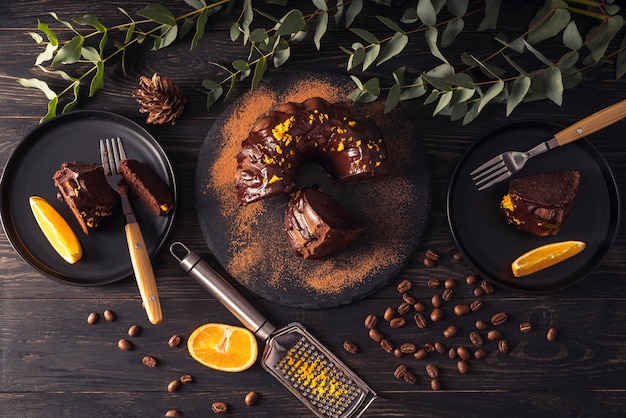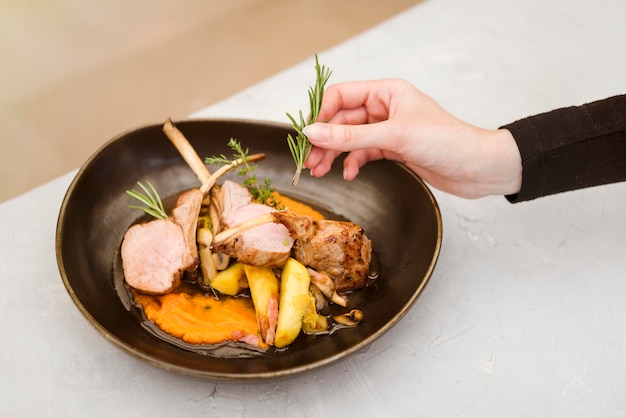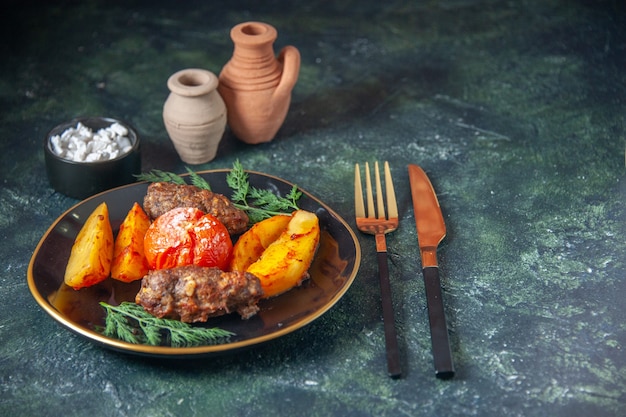You've bagged a magnificent buck, and now you're staring at a beautiful deer tenderloin, wondering what culinary magic you can create. Don't worry, my friend, I'm here to guide you through the ultimate guide to cooking a perfect deer tenderloin. We're talking about a dish that's so succulent, so juicy, and so bursting with flavor that your guests will be begging for more. Trust me, I've been cooking venison for years, and I've picked up a few tricks along the way. From prepping the tenderloin to creating a marinade that's simply irresistible, I'm going to share all my secrets with you. Ready? Let's get cooking!
Part 1: A Little About Deer Tenderloin

Let's start with the star of the show: the deer tenderloin. It's not just a cut of meat; it's a culinary treasure. It's the most tender and flavorful part of the deer, making it perfect for a celebratory meal. And since it's not exactly a giant slab of meat, it's ideal for smaller gatherings or an intimate dinner for two. Think of it as the crown jewel of your hunting trophy, and treat it with the respect it deserves.
What to Look For
Now, when you're admiring your deer tenderloin, you want to make sure it's fresh and nicely trimmed. It should have a rich, deep red color, and the fat should be distributed evenly, not concentrated in one spot. You want to look for a tenderloin that's nice and plump – the thicker it is, the better. It’s all about the marbling, which adds flavor and juiciness to the meat.
How to Store It
To keep your tenderloin in tip-top shape, store it in the fridge, wrapped tightly in cling film or a reusable container. You can also freeze it, but thaw it slowly in the fridge before cooking. Freezing for more than 3-4 months can compromise the quality of the meat, so keep that in mind.
Part 2: Gathering Your Kitchen Arsenal

Now that your tenderloin is prepped and ready to go, let's talk about the tools that will help you achieve culinary greatness. Gather your trusty kitchen crew – the equipment that will help you create that perfect sear and finish.
Essential Tools for the Perfect Deer Tenderloin
- Sharp knife: You'll need a sharp knife for trimming the tenderloin and slicing it beautifully after it's cooked. I swear by a trusty old chef's knife that's seen it all, and it never fails me.
- Cutting board: Choose a good quality cutting board, nothing too flimsy. You don't want it moving around while you're chopping, and it should be clean to avoid any unwanted cross-contamination.
- cast iron skillet: This is my absolute favorite for cooking deer tenderloin. It gets scorching hot, which creates that perfect sear and adds a rustic touch to the dish.
- meat thermometer: This is a must-have for ensuring your tenderloin is cooked to perfection. You don't want to overcook it, so keep an eye on the temperature.
- roasting pan: If you're planning on roasting your tenderloin, a roasting pan is essential. It doesn't have to be fancy, just big enough to accommodate your prize.
Part 3: The Art of the Marinade

Now, let's talk about the magic of marinades. A good marinade can take your deer tenderloin from good to extraordinary. It tenderizes the meat, adds a depth of flavor, and can even help prevent it from drying out. The longer you marinate your tenderloin, the more intense the flavor will be.
Why Marinate?
Marinades work by breaking down the protein in the meat, making it more tender. They also infuse the meat with flavor and moisture, acting like a protective layer to keep it juicy. The result? A melt-in-your-mouth experience that will have your guests raving.
The Secrets of a Great Marinade
There's no single "right" way to make a marinade; it's all about finding what you love. But here are some essential ingredients that elevate any marinade:
- Acid: Acid helps to break down the protein in the meat, making it more tender. Vinegar, lemon juice, or orange juice are all great options.
- Oil: Oil helps to keep the meat moist and adds a layer of richness. Olive oil, sunflower oil, or even a combination work beautifully.
- Flavourings: This is where you unleash your creativity. Experiment with herbs, spices, garlic, ginger, soy sauce, honey, maple syrup – the possibilities are endless!
My Favourite Marinade
Over the years, I've developed a marinade that never fails to impress. It's simple, but packed with flavor. Here's what you'll need:
- 1/2 cup red wine vinegar
- 1/4 cup olive oil
- 2 cloves garlic, minced
- 1 teaspoon dried thyme
- 1 teaspoon dried rosemary
- 1/2 teaspoon black pepper
- 1/4 teaspoon salt
To make the marinade, simply combine all the ingredients in a bowl and whisk until everything is well blended. Pour the marinade over your tenderloin and let it soak in the fridge for at least 2 hours, or up to overnight. The longer it marinates, the more flavourful it will become.
Part 4: Cooking Your Deer Tenderloin to Perfection
Now that your tenderloin is happily marinating, it's time to cook it up. There are a couple of fantastic ways to cook deer tenderloin, but I'm going to focus on two of my favorites: searing and roasting. Both methods result in tender, juicy, and flavorful venison.
Searing the Tenderloin for a Crispy Crust
Searing is a quick and easy way to cook deer tenderloin, giving it a beautiful, crispy crust. Here's how I do it:
- Preheat your cast iron skillet over high heat. You want it to be smoking hot.
- Pat the tenderloin dry with paper towels. This ensures a nice, even sear.
- Season the tenderloin generously with salt and pepper.
- Add the tenderloin to the scorching hot skillet and sear for 2-3 minutes per side, or until it's browned and crispy.
- Reduce the heat to medium and cook the tenderloin for another 5-7 minutes, or until it reaches your desired level of doneness.
- Remove the tenderloin from the skillet and let it rest for 5-10 minutes before slicing. This allows the juices to redistribute throughout the meat, ensuring a tender and flavorful result.
Roasting the Tenderloin for a Hands-Off Approach
If you're looking for a more hands-off method, roasting is the way to go. It's perfect for a larger tenderloin or when you're cooking for a crowd. Here's how to roast it to perfection:
- Preheat your oven to 350°F (175°C).
- Place the tenderloin in a roasting pan.
- Season the tenderloin generously with salt and pepper.
- Roast the tenderloin for 20-25 minutes, or until it reaches your desired internal temperature.
- Remove the tenderloin from the oven and let it rest for 5-10 minutes before slicing. This resting time allows the juices to redistribute throughout the meat, resulting in a more tender and flavorful final product.
Part 5: Finding the Perfect Doneness
Now, here's where things can get a little tricky. You want your tenderloin cooked to perfection, but you don't want to overcook it. Overcooked venison can be tough and dry, so finding the right level of doneness is key.
Temperature Guide for Perfectly Cooked Venison
Here's a handy guide for cooking venison to different levels of doneness, using a meat thermometer.
| Doneness | Internal Temperature (°F) | Internal Temperature (°C) |
|---|---|---|
| Rare | 125-130 | 52-54 |
| Medium-rare | 130-135 | 54-57 |
| Medium | 135-140 | 57-60 |
| Medium-well | 140-145 | 60-63 |
| Well-done | 145-150 | 63-66 |
Remember, these are just general guidelines. The cooking time will vary depending on the size and thickness of your tenderloin, as well as the temperature of your oven. It's always best to use a meat thermometer to ensure your tenderloin is cooked to your liking.
Part 6: Resting and Slicing for Maximum Tenderness
Your tenderloin is cooked, and you're probably itching to dig in. But hold your horses!
The Importance of Resting
Let it rest for 5-10 minutes before slicing. This essential step allows the juices to redistribute throughout the meat, resulting in a more tender and flavorful final product. You can cover it loosely with foil to keep it warm, but don't wrap it tightly as this will trap the steam and make it soggy.
Slicing Tips for Tender, Juicy Bites
Once the tenderloin has rested, it's time to slice it beautifully. Slice it thinly against the grain to make it even more tender. A carving fork can be helpful for holding the tenderloin steady as you slice.
Part 7: Serving and Pairing for a Delicious Feast
Now, this is where you can unleash your culinary creativity.
Serving Ideas to Elevate Your Deer Tenderloin
Deer tenderloin is a versatile cut of meat, so you can serve it with a variety of sides and sauces. Here are some classic pairings that complement the rich flavor of venison:
- Roasted vegetables: Roasted root vegetables, like carrots, potatoes, and parsnips, are a perfect match for the richness of venison. They add a touch of sweetness and earthy flavor that complements the meat beautifully.
- Wild rice pilaf: wild rice adds a touch of earthy flavour that complements the venison beautifully. It adds texture and a subtle nutty flavor that elevates the dish.
- Mushroom sauce: A creamy mushroom sauce is a rich and decadent accompaniment for venison. It adds a luxurious touch and enhances the savory flavor of the meat.
- Cranberry sauce: Cranberry sauce provides a tart and tangy counterpoint to the sweetness of the venison. It adds a festive touch and balances the richness of the meat beautifully.
Wine Pairings to Complement Your Meal
I've got a couple of favorite wine pairings for venison that I think you'll enjoy.
- Pinot Noir: The lighter tannins of Pinot Noir make it a good match for the delicate flavour of venison. It brings out the subtle sweetness of the meat and creates a harmonious pairing.
- Syrah: The bold flavours of Syrah can stand up to the richness of venison. It adds complexity and depth to the dish, creating a bold and satisfying combination.
Part 8: Leftovers and Storage Tips
It's likely you've cooked a bit more than you need (because who doesn't love leftovers?), so here's how to store them properly:
Storing Leftovers
Leftover deer tenderloin can be stored in the fridge for up to 3 days. Wrap it tightly in cling film or a reusable container to keep it fresh. You can also freeze leftovers for up to 3 months.
Using Leftovers for Delicious Second Meals
Leftover deer tenderloin is a versatile ingredient. It's great in salads, sandwiches, or even as a topping for pasta. You can also slice it thinly and add it to a stir-fry.
FAQs: Common Questions Answered
Let's address some of the most frequently asked questions about cooking deer tenderloin.
1. Is venison gamey?
The level of “gamey” taste in venison can vary depending on the deer’s diet, age, and how it was processed. However, generally, venison is not as gamey as other wild game, like boar. If you're concerned about gamey flavour, try marinating the venison for longer, or using a marinade with strong flavours to mask the gamey taste.
2. How do I know if venison is cooked?
The best way to know if venison is cooked is to use a meat thermometer. Venison should be cooked to an internal temperature of 145°F (63°C) for medium-well. But it's important to note that venison is often cooked to a lower temperature, as it can become tough and dry if overcooked.
3. Can I cook venison in a slow cooker?
Absolutely! slow cooking is a great option for tenderizing venison and creating delicious stews or pulled venison. Just make sure to use a marinade to help keep the venison moist and flavorful.
4. How do I remove the silver skin from deer tenderloin?
Silver skin is a tough, white membrane that can be found on deer tenderloin. It's best to remove it before cooking, as it won't become tender during cooking. Use a sharp knife to carefully peel it off the meat.
5. Can I grill deer tenderloin?
Yes, grilling is a fantastic way to cook deer tenderloin. Preheat your grill to medium-high heat and grill for 2-3 minutes per side, or until it's cooked to your desired temperature.
I hope you found this guide helpful! Remember, cooking deer tenderloin is all about having fun and experimenting with different flavours. Don't be afraid to try new things, and most importantly, enjoy the process! Happy cooking!
Everyone is watching

Corn on the Cob: The Ultimate Guide to Perfectly Cooked Ears
Healthy MealsAh, corn on the cob. Just the name evokes images of sunny days, barbecues, and that sweet, juicy flavour that ...

Perfect Pork Roast Oven Cooking Time: A Guide to Delicious Results
Healthy MealsThere's something truly satisfying about a perfectly roasted pork. The aroma alone is enough to make your mout...

Ham Cooking Time: How Long to Bake, Smoke, or Boil a Delicious Ham
Healthy MealsAh, ham. It's a classic, isn't it? A real crowd-pleaser, especially around holidays. And when done right, it'...

Scallops: The Ultimate Guide to Perfect Cooking
Healthy MealsAh, scallops. Those delicate, sweet, and utterly delicious morsels of the sea. They hold a special place in my...

Spaghetti Squash: The Ultimate Guide to Cooking and Serving
Healthy MealsRemember that time you saw spaghetti squash at the supermarket, looking all bumpy and strange, and thought, "W...
